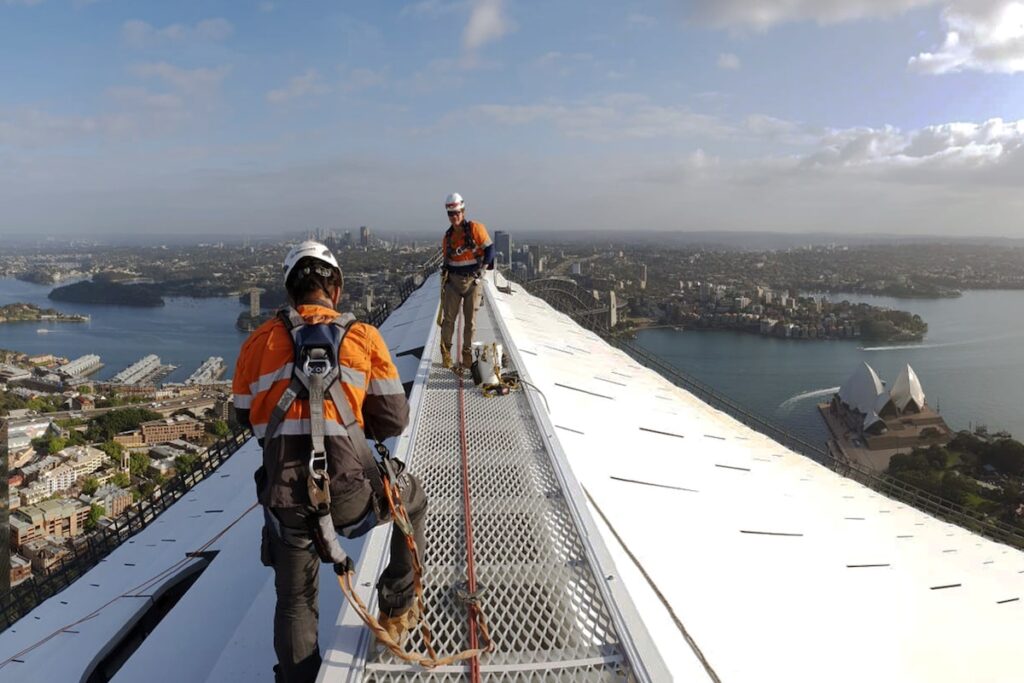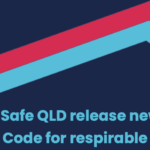
Source: Article By Scott Barber, for Inside Construction.
As the number of complex building and infrastructure projects around the world continues to rise, Working at Height Association Chief Executive Officer Scott Barber delves into the complexities associated with height safety management in the construction industry.

Increased complexity is a challenge facing many organisations. Understanding key risks and how to apply suitable solutions is critical, but how do we distil the problem to find the best remedy?
Most efforts to improve safety are still based on the assumption that our safety management systems are effective, and that it is the behaviours of individuals, who either take shortcuts or fail to follow procedures that create unsafe workplaces. It’s an easy line to follow if there is a disconnect between safety management and the actual application of policy and procedures.
When we put our faith in these systems, we must understand that while an individual safety management system may be coherent and logical, it is always surrounded and impacted by other factors. It’s not only considerations like environment, weather and changes in the workspace dynamics (particularly in construction – different trades and structural changes), but it’s the appropriateness and versatility of the systems and more importantly, the working at height competency of those working in the space that will determine the best outcomes.
Related stories:
- The importance of training when working at height
- Victorian Government launches new workplace safety blitz
- WorkSafe Victoria targets height risks
All implemented systems need to align with the WHS Act and Regulations, taking into consideration the PCBU requirements for providing a safe workplace. Then there is the importance of aligning with the appropriate standards. But these are base level compliance KPIs, proper safe design and training are the critical pieces of the puzzle.
The important point here is that each of these systems and processes has an end purpose or goal, so it follows that each of these goals influences how work is completed and where attention is focused. Unfortunately, these systems and goals, while each important and valid in its own right, interact in such a way that they create layers and complexities that are rarely intended or well understood.
These layered and sometimes complicated procedures can introduce inefficiencies, and if not understood clearly and aligned with an understanding of the core competencies required to perform tasks safely, can make it difficult for workers to apply. This can result in a significant gap between work as envisioned, based on idealistic compliance with our safety systems and procedures, and work as executed where our workforce does their best to balance these competing priorities.
In managing safety effectively, leaders need to develop a greater understanding of the complexities that the work location creates in the execution of those tasks that need to be undertaken. The skills required to work safely at height sit parallel to trade and engineering skillsets, so the actual execution of those safe work methods needs to align with the work being carried out. This type of understanding would include recognising the difficulty frontline managers, supervisors and the workforce face in understanding, rationalising and applying the intent of those safety protocols in practice. In other words, while our safety systems look great in the comfort of our offices, we really need to look at them from the perspective of our teams in the field.
Understanding and managing complexity
One of the most significant consequences in not understanding the complexity in height safety is oversimplification. Not understanding or adopting the working at height hierarchy of controls leads to the assumption that applying the lower tiers of control measures (PPE and Administrative) provide effective enough protection for those at risk. This oversimplification is a common phenomenon, as the implementation of PPE measures is a highly visible indicator, but often the issues with this approach are only recognised after an incident has occurred.
All too often, the incident focuses on the behaviours or actions of the individual, and this almost always arises from hindsight bias and failing to take into account the realities of the situation from the perspective of those involved in the event.
Assuming the systems put in place effectively address the risk profile, how much consideration is made for the core competencies required to operate at height safely, and the maintenance of these skills, in delivering the safety outcomes desired?
It is very easy to apply hindsight in the investigation of fall events, highlighting ‘flawed decisions’ and ‘missed opportunities’ when looking back at the approaches to safety that were taken. But this view only looks at how the task should have been done. What we need to account for is that the situation and actions taken by the individual may have seemed completely rational at the time. The question is, was the worker trained well enough and genuinely competent to assess the risk appropriately and have the experience to be situationally aware when applying the safest methods of achieving the set tasks.
The challenge for safety managers is to be able to assess why the worker thought the work methods they were using at the time of the incident were rational.
But by providing practical and relevant education and training, we empower individuals to make better and safer decisions, and with it, the ability to apply the systems put in place by management. By encouraging genuine skills and expertise, there can be collaboration with safety leadership in the development of better work practices. When we can achieve that level of understanding, we will have the greatest opportunity to identify the competing goals, complexities and systemic influences that, if addressed, have a much greater chance of preventing fall events.
Addressing the challenges
We need to challenge the way we currently manage fall risk, and this extends to how we manage the associated and linked hazards of dropped objects and confined space. Questioning and challenging our current safety paradigms are the inherent responsibility of safety managers, but are we informed and expert enough to look at this holistically?
It is very easy to adopt pre-packaged solutions to address the risk, but without understanding the complex nature of the discipline and the variety of measures available to manage the high-risk nature of the work, this path leads to heightened exposure to all affected. Adopting a more ‘critical thinking’ approach to PPE/PFAS and systems selection, which is informed by a better understanding of the nature of work being carried out at height, will lead to much better outcomes. Ultimately, this comes down to education, information availability and engagement.
Embracing the complexity of working at height does not necessarily complicate the situation but provides a more robust framework of assessment and application of best practice work methods. There is not one solution to fix all situations, but that does not mean there are not comparable approaches and cross-overs in skills and equipment. Understanding the potential hazards informs our decisions as professionals, and opening conversations within the safety community around how we have successfully managed these challenges benefits every single stakeholder, including the families of those we expect to operate in these environments.
We need to encourage leaders to engage in these discussions and learn from our peers. We do not operate in silos, so supporting safe working at height means collaboration with our community, industry associations and subject matter experts. There are relationships between safe design principles and system design, integration and execution, and to acknowledge the complexities of this interaction potentially inspires advancements in our approach. We have not seen any real changes in the statistics for many years, so broadening our view to include these external factors and the different layers and interactions that make up best practice can only lead to positive change.
We can try to segregate education/training from our safety management systems from these other influences, but this is just another form of oversimplification. They are indelibly linked and this forms part of the structure of more holistic approaches.
My advice to organisational leaders and safety professionals wanting to embrace a new and fresh approach to height safety is to acknowledge the complexities, both systemic and personal, that exist in modern workplaces. We must broaden our view to include not only what makes up our safety management system, but all the external factors that potentially interact and affect the safe execution of those systems.
Adopting this approach will encourage leaders to avoid deconstructing individual elements of a system when trying to find why something went wrong and will encourage them to look at the system as a whole.
While we will struggle to address every risk factor on dynamic and changing worksites, if we engage and listen more carefully to our workforce and embrace complexity by looking at systems holistically, we will have the chance to see these layers and interactions. This will provide the opportunity to proactively identify and mitigate some of these risks and to change the way that we and our workforce perceive safety at height.






